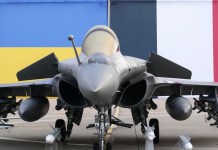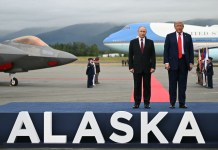Recently, without stating against whom, but Chinese President Xi Jinping called his PLA troops to “put all (their) minds and energy on preparing for war”.
Why Spain Is Rejecting US’ F-18 Super Hornets For Eurofighter Typhoons?
Amid Taiwan’s increased narrative for independency, China has declared that it will not hesitate in using force to protect its land, indirectly signalling towards Taipei.
Taiwan has reached out to the US seeking aid in case of a Chinese invasion. Meanwhile, the US has not only been morally and diplomatically supporting Taipei but the White House has also approved advanced arms sales to Taiwan to defend itself.
If China decides to invade Taiwan, it is impossible for even the US to defend the island nation. Michael Beckley, an associate professor of political science at Tufts University, writes in the Foreign Policy:
“China’s military is 10 times as large as Taiwan’s and includes Asia’s biggest air force and the world’s largest army, conventional missile force, coast guard, and navy by the number of ships”.
He further stresses upon the fact that China has built several times more naval ships than the United States since 2015, and it now outspends Taiwan 25-to-1 annually on defence, making the cross-strait military balance in China’s favour.
However, there are still ways Taiwan can defend itself against the Chinese aggression with the US help. Waiting for the approval of the Congress, the deal will provide Taiwan High Mobility Artillery Rocket System (HIMARS), essentially a truck-based rocket launcher; the Standoff Land Attack Missile-Expanded Response (SLAM-ER) air-to-ground missiles; external sensor pods for the F-16 fighter; drones and a coastal defence missile system.

The sensor pod for F-16A/B would enable the fighters to send images and data from the aircraft back to ground stations in real-time and greatly improve the warplane’s situation analysis and ability to hit a target, says a report in South China Morning Post.
Quoting sources, Reuters reports claims that deal may include “drones that can see over the horizon for surveillance and targeting, coupled with advanced missiles and coastal defences that include smart mines and anti-submarine capabilities to impede a sea invasion”.
As per the Reuters report, land-based Boeing-made Harpoon anti-ship missiles will serve as a coastal defence against cruise missiles is also under discussion.
While the procurement of the weapons does not change the power balance between China and Taiwan, “these weapons are offensive and could be used to attack the PLA’s assembly area on the mainland coast before departure, or their vessels during the crossing in the strait, in the event the PLA takes military action on Taiwan,” South China Morning Post quotes Hong Kong military commentator Song Zhongping.
The US has not openly announced its support for Taiwan in case of an invasion but the constant supply of weapons including Boeing-made long-range SLAM-ER air-to-ground missiles sends a clear message. The can be used in a counterstrike directed at Chinese mainland targets, or, theoretically, even in a first strike.
Last month, a US official had said that Taiwan needs to significantly increase its defence budget to counter any military threat from China. David Henley, principal deputy assistant secretary of defence for Indo-Pacific Security Affairs, during the U.S.-Taiwan Defense Industry Conference had said that Taiwan’s proposed $1.4 billion increase in the defence budget was inadequate.
Experts have agreed and said that Taiwan should devote its limited defence budget in acquiring huge arsenals of mobile missile launchers, armed drones, and mines. Amid this, Taiwan has pledged to increase its defence spending by 10 per cent next year and prioritize asymmetric capabilities.
Last year, Taiwan had agreed to purchase 108 M1A2T Abrams tanks from the US. If the Congress passes the current deal, the U.S. would have sold around $17.5 billion in weapons to Taiwan during President Donald Trump’s four years in office.
Meanwhile, reports suggest People’s Liberation Army (PLA) is preparing to strike the Taiwan island with new weapon deployment. As per the reports, PLA has deployed J-20 stealth fighter jets and Marine Corps units to the coastal region along with advanced hypersonic missile, the DF-17, to the Chinese mainland’s southeast coast near the island of Taiwan.
China’s state-owned media Global Times, however, believes that weapons like hypersonic missiles, the DF-17s, would not be used for targeting the island and they would actually target foreign military forces if they intervene in PLA’s reunification operations.
Experts talking to the EurAsian Times believe that the US may never permit China to invade Taiwan but will not mind its intimidation. After all, Taiwan and other Asian nations including Japan and South Korea are lucrative defence markets for the United States.




